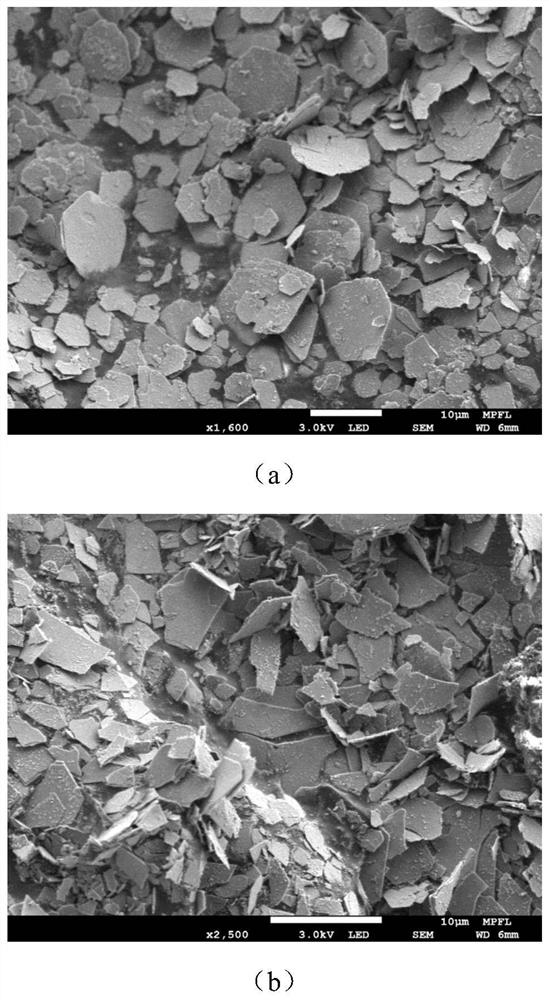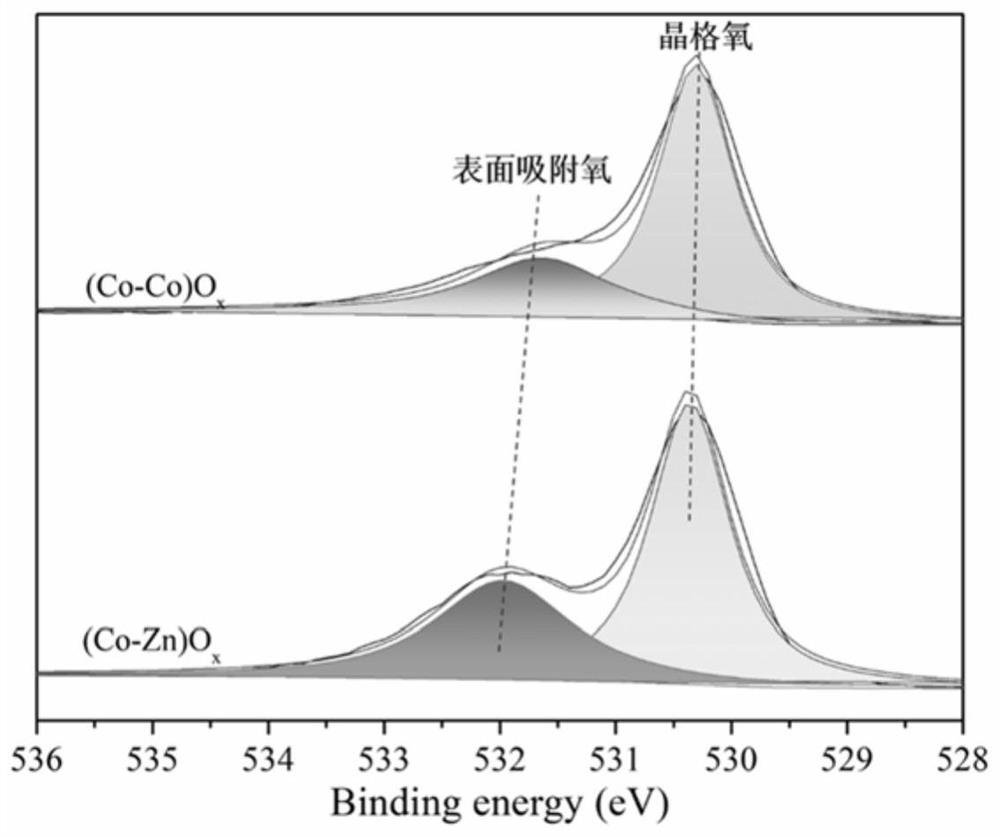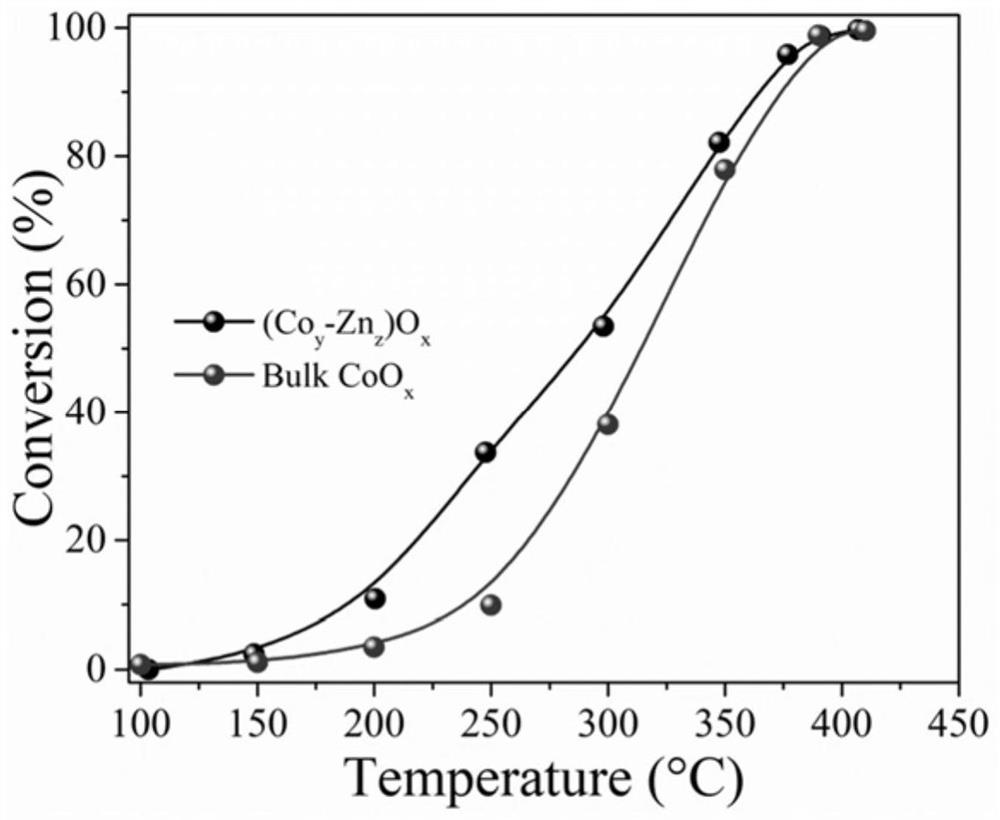Preparation method of a two-dimensional sheet-like porous composite oxide and its application in the control of chlorine-containing volatile organic pollutants
A composite oxide and sheet-like technology, applied in the field of air pollution control, can solve the problems of large energy consumption, achieve high stability and chlorine resistance, excellent oxidation ability of chlorine-containing volatile organic compounds and dechlorination ability
- Summary
- Abstract
- Description
- Claims
- Application Information
AI Technical Summary
Problems solved by technology
Method used
Image
Examples
Embodiment 1
[0037] Example 1 Preparation of bifunctional and multi-effect cobalt-zinc oxide by in-situ crystallization combined with in-situ chemical precipitation
[0038]Completely dissolve 0.045mol of dimethylimidazole in 100mL of anhydrous methanol, and stir at 500rpm for 10min to form a colorless, clear and transparent solution A; completely dissolve 0.045mol of zinc nitrate hexahydrate in 100mL of anhydrous methanol and stir at 500rpm for 20min to form a colorless, clear and transparent solution B; gradually add solution B to A and mix evenly, and stir at 600rpm for 10min, then adjust the speed to 200rpm and stir until the solution turns white. Then let the white solution stand for 48 hours, filter the mixture, wash with absolute ethanol and deionized water for more than three times, and dry at 60°C; grind 0.2 g of the prepared white powder into a fine powder, add 30 mL of deionized In water, use an ultrasonic instrument to sonicate the solution until the white powder is completely ...
Embodiment 2
[0039] Example 2 Activity Test and Evaluation of Cobalt-Zinc Composite Metal Catalytic Material Catalytic Degradation of 1,2-Dichloroethane
[0040] Get the solid powder tableting obtained in Example 1, sieve (40-60 mesh), and accurately take by weighing 0.5g catalyzed material after sieving with 1,2-dichloroethane as probe gas, the reactant The concentration was controlled at 1000ppm, the reaction space velocity was 36000mL / g h, and the oxygen concentration was 21%. 400°C) catalytic activity, and the reaction products were monitored and analyzed by gas chromatography.
Embodiment 3
[0041] Example 3 Stability Test of Cobalt-Zinc Composite Metal Catalytic Material Catalyzed Degradation of 1,2-Dichloroethane
[0042] Get the solid powder obtained in Example 1 and press into tablets, sieve (40-60 mesh), accurately weigh 0.5g of the catalytic material after sieving and place it in the fixed bed of the evaluation device, and use 1,2-dichloroethane Alkanes are used as probe gas, the concentration of reactants is controlled at 1000ppm, and the reaction space velocity is 36000h -1 , the oxygen concentration was 21%, and the catalytic reaction activity of the catalyst at 370°C was continuously tested, and the reaction products were monitored and analyzed by gas chromatography.
PUM
 Login to View More
Login to View More Abstract
Description
Claims
Application Information
 Login to View More
Login to View More - R&D
- Intellectual Property
- Life Sciences
- Materials
- Tech Scout
- Unparalleled Data Quality
- Higher Quality Content
- 60% Fewer Hallucinations
Browse by: Latest US Patents, China's latest patents, Technical Efficacy Thesaurus, Application Domain, Technology Topic, Popular Technical Reports.
© 2025 PatSnap. All rights reserved.Legal|Privacy policy|Modern Slavery Act Transparency Statement|Sitemap|About US| Contact US: help@patsnap.com



